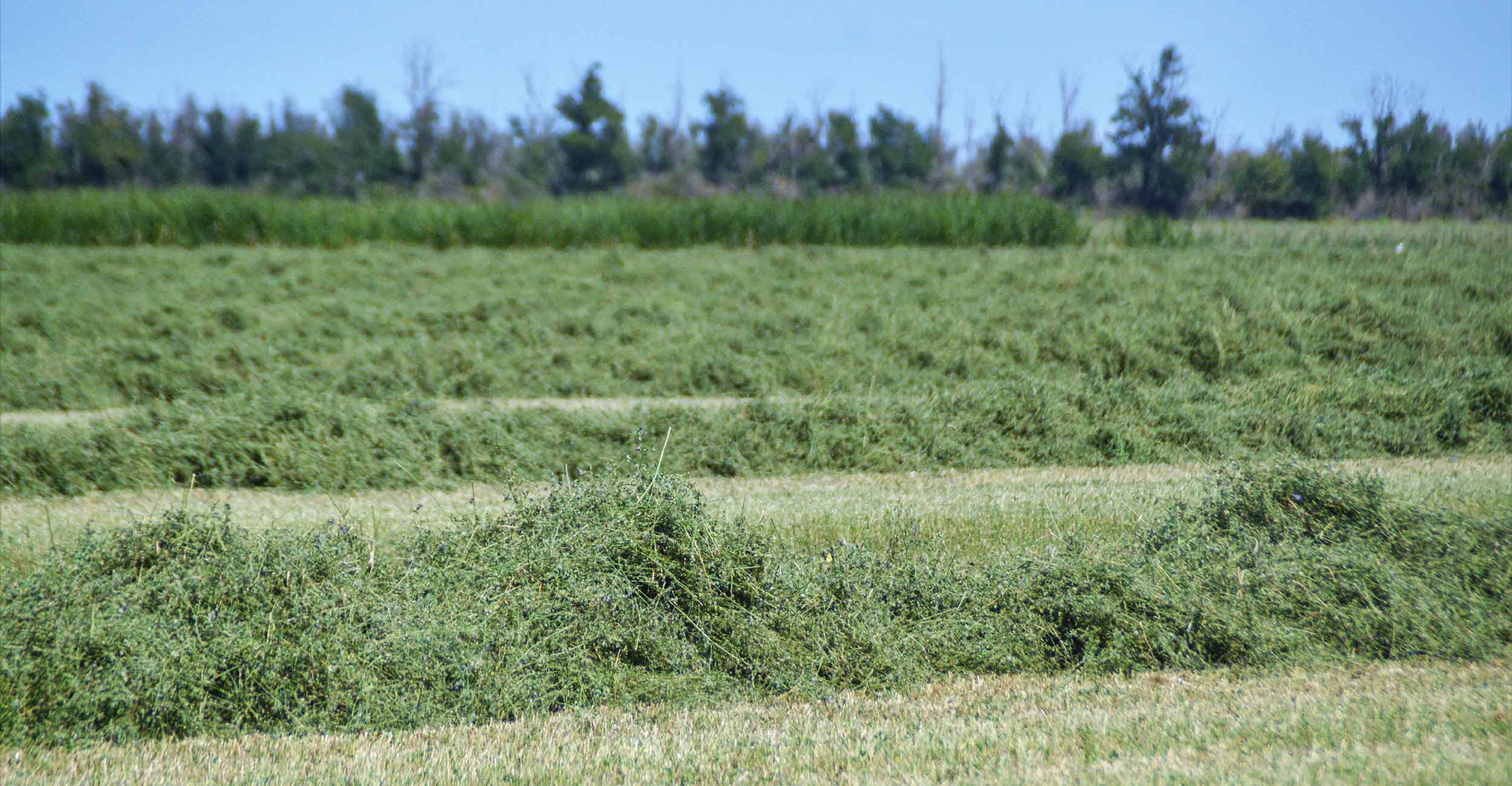In the vast world of animal farming, choosing forage is a key concern that has a direct impact on animal health and well-being. This apparently simple decision requires a deep understanding of the nutritional needs of animals, especially for ruminants, and the characteristics of the different types of forage available.
In this article, we will dive into the process of selecting the optimal forage for animals, providing informed advice gained from Agricole Forte's experience in the livestock feed industry.
Forage classification
First of all, it is key to understand how forages are classified.
Forages can be classified into different categories based on their composition, storage method, and nutritional properties.
For example, we have, depending on the crop plants, sun-dried hay, silage, and dehydrated and/or ventilated, among which alfalfa stands out, each with specific characteristics suited to specific animal species and dietary requirements.
Difference between different types of forage
-
Hay: it is dried grass bearing various characteristics of botanical species, commonly used for feeding cattle, sheep, horses and other farm animals. It is rich in fiber and commonly used in the diets of all animals, ruminants and horses.
-
Silage: is a fermented fodder, stored under anaerobic conditions, such as corn or grass. It is rich in nutrients and used to mainly feed ruminants as a supplement in diets.
-
Dehydrated hay: immediately after a very short pre-drying period in the field, the plant is harvested "green" to prevent spontaneous fermentation and brought to the plant for low-temperature dehydration, a process that maintains all the nutritional properties of the crop.
What is forage for animals?
Forage is the group of plant feeds that constitute the basis of nutrition for farm animals, ruminants and horses.
It provides the essential fiber, protein, vitamins, carbohydrates and minerals needed for a balanced diet.
The choice of forage must therefore take into account the animal species, growth stage, health status, and intended use of the animal (e.g., milk production, meat production, or athletic performance).
Forage Unit and animal nutrition
A key concept in forage selection is that of "Forage Units."
This term refers to a standardized measure of the nutritional energy provided by forage.
Understanding the value of Forage Units helps farmers in balancing feed rations so that they meet the energy needs of animals while ensuring healthy growth, greater health and well-being, and optimal performance production.
Forage for different animal species and times of the year
Every animal species has its own unique nutritional needs, and therefore not all kinds of forages are suitable for all animals. For example, ruminants like cattle and sheep benefit greatly from alfalfa and hay, which support their complex digestion. Horses, on the other hand, require high-quality forages, such as l’alfalfa in wafer cube, that are easily digestible and low in dust to prevent respiratory problems.
Moreover, when choosing forage, the season and weather conditions must also be considered.
During the winter months, when fresh grass is scarce, hay becomes a key component of the animals' diet. Also, silage can be used to provide a rich and nutritious diet throughout the year.
Now, we will further explore the specific considerations in choosing forage for animals and how Agricole Forte's products fit into this context.
Choosing the right forage in practice
Moving on in our guide on choosing the right forage for animals, it is also critical to consider forage quality and composition.
Forage quality directly impacts animal health and the level of forage products. A high-quality forage should be rich in nutrients, with a good balance of fiber, protein, and carbohydrates, and free of harmful substances or contaminants.
Benefits of Alfalfa forage
Alfalfa is a great choice for many farm animals. Rich in protein, minerals and vitamins, alfalfa provides comprehensive and balanced nutrition. Moreover, its high digestibility makes it excellent for categories such as: dairy cows, buffaloes, beef cattle, sheep and goats, horses, and barnyard animals.
Agricole Forte offers a wide range of dehydrated alfalfa products in the form of bales, pellets and wafers, which are geared for different needs and life stages and diets of animals.
Considerations regarding conservation of foraging
Another important point in forage selection is its storage. Forage must be stored in such a way as to preserve its quality and prevent the growth of mold or other contaminants. Techniques such as proper drying, or possibly ensiling, are therefore crucial to maintain the quality of the forage. Not only that, but dehydration ensures consistency in the organoleptic and nutritional qualities of alfalfa forage, which is always available year-round.
Forage and environmental sustainability
Last, it is important to take environmental impacts into account when choosing forage. Sustainable foraging practices and use of locally produced forages can decrease the carbon footprint and support local economies.
Therefore, choosing forage for animals is a complex process that requires a deep understanding of animals' nutritional needs, forage quality, and conservation practices.
A mix of skills is critical to choosing the right forage.
Not only does choosing the right forage improve animal health and well-being, but it also contributes to the sustainability of the entire livestock system.
With products like those offered by Agricole Forte, livestock producers can ensure high-quality nutrition for their animals while supporting sustainable farming practices to improve barn income.
Request a consultation from our experts on the ideal forage for your type of livestock farm.
